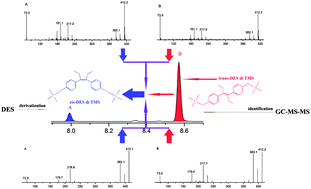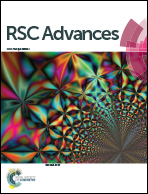Identification and quantitation of diethylstilbestrol in aquatic products using gas chromatography coupled with triple quadrupole tandem mass spectrometry
Abstract
We developed a highly sensitive and specific method for determining DES residue in fish meat using gas chromatography coupled with tandem mass spectrometry (GC-MS-MS) with a triple quadrupole analyzer (QqQ). The samples were extracted using ethyl acetate, cleaned using florisil, and derivatized using a mixture of 99% N,O-bis(trimethylsilyl)trifluoroacetamide (BSTFA) and 1% trimethylchlorosilane (TMCS). The results showed that the GC-MS-MS system presented great advantages for the identification and quantitation of DES in fish meat. The limit of detection (LOD) and limit of quantification (LOQ) values were 0.0142 μg kg−1 and 0.0475 μg kg−1, respectively. The recoveries from the spiked fish samples spiked at four levels were in the range of 86.1% to 106%. The precision of the method was evaluated using the relative standard deviation (RSD) and ranged from 1.39% to 9.62%. The linear range was from 1.00 to 100 μg L−1 with good linearity (r = 0.9998). It can be concluded that the method is reliable for identifying and detecting DES residue at trace levels in aquatic products.


 Please wait while we load your content...
Please wait while we load your content...